Numismatics does not only include the study of coins but also a range of coin-like objects, such as medals, tokens and other related items. This month's 'coin of the month' is actually a medal: the Fields medal, displayed on the University's main home page, awarded by the International Mathematical Union to Martin Hairer, professor in mathematics at Warwick University, for his outstanding achievements in stochastic partial differential equations (SPDEs). This recognition is of highest international renown and the University can be proud of such a scholar.
As a classicist I am light-years away from understanding SPDEs and adequately appreciating his dazzling theory of regularity structures. Yet, there is a quote from Hairer which is, I believe, appealing to classicists: 'One advantage of mathematics is the immortality. Theorems that were proven 2,000 years ago are still true...' This is food for thought within our own disciplines of Classics and Ancient History, including numismatics. Would we claim immortality for our field of research as well? My answer is 'yes', and the medal itself provides an excellent example to underpin this affirmation.
The obverse depicts Archimedes (in a post-World War I artistic style) and the Greek legend ΑΡΧΙΜΕΔΟΥΣ (‘of Archimedes’) and the Latin legend TRANSIRE SVVM PECTVS MVNDOQVE POTIRI (‘Exceed above oneself and grasp the world’). The reverse shows a tablet (a tabula ansata) with the Latin inscription CONGREGATI / EX TOTO ORBE / MATHEMATICI / OB SCRIPTA INSIGNIA / TRIBVERE (‘Gathered from the entire world, Mathematicians have awarded (this medal) for outstanding writing’). The tablet is displayed on a laurel branch, and the branch is placed upon a background with Archimedes' theorem of the sphere and cylinder, a line drawing of a sphere inscribed in a cylinder. Archimedes had proven that both the volume and the surface area of the sphere were two-thirds that of the cylinder.
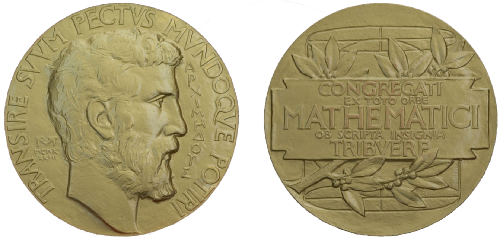
The fields medal awarded to Martin Hairer by the International Mathematical Union on 13 August 2014. The medal is in gold, and bears the monogram RTM, the signature of the artist Robert Tait McKenzie (1867-1938). The date is MCMXXXIII.
The medal has an impressive concentration of references to antiquity. Archimedes (c. 287-212 BC) was active in the Hellenistic period at the court of King Hieron II in Syracuse (275-215 BC) and is considered the greatest ancient mathematician. He died during the sack of Syracuse by the Romans in 212 BC, sadly killed by a Roman soldier according to Plutarch (Marcellus 19.4-5) when he was working out a problem involving circles. Plutarch (Marcellus 17.7) relates also that his tomb was adorned with his theorem of the sphere and cylinder and that, proud of his achievement, it was Archimedes himself who requested the theorem adorn his funerary monument.
With the Fields medal the community of modern-day mathematicians refers to one of their most famous forerunners. They define themselves in the present through the past, and by doing so they build up a foundation for the future. They are, by the way, not the first to go back to Archimedes or his tomb monument. The philosopher and statesman Cicero (106-43 BC) had already gone in search of the tomb and its theorem. He discovered it outside Agrigentum, overgrown by thorn bushes (Tusculum 5.23.64-65).
The laurel branch on the reverse, at the root of the word 'laureate', and the shape of the tablet are further references to antiquity. The laurel was awarded to winners of the Pythic games, and later on laurels in the form of wreaths were awarded to Roman victors in triumph, to poets, and to Christian martyrs.
Referring back to forerunners and their achievements is taking an example from earlier scholarship as a way of legitimatizing present and future research activities. It is also an act of humility by relativizing a single achievement. This is also expressed by the fact that the laureate's name is missing. According to the instructions of John Charles Fields, who established the award, the medal should not bear the name of an individual nor of a nation, and the legend had to be in Latin or ancient Greek. Moreover the medal was not only to be awarded for past achievement, but also to encourage future research. (As a matter of fact, the name of the recipient is engraved on the medal’s edge.)
To inscribe the present into the unlimited time-span between past and future means breaking up limits. This principle is as immortal as Archimedes’ theorem, and it makes ancient history, as well as history more generally, an immortal science. Immortality on the other hand stands in cruel contrast to the reality of human life. Immortality in science therefore responds to the human hope to transgress the limitations of being a human being and maybe to hope for eternal life.
This is expressed by the inscription on the obverse of the medal which is a quote from Marcus Manilius, a poet and astronomer of the first century AD: TRANSIRE SVVM PECTVS MVNDOQVE POTIRI—‘Go beyond oneself and grasp the world’ (Astronomica 4.392). This comes from a longer passage on the signs of the zodiac where the author advocates the arduous study of astronomic science as a way of seeking God: ‘Quod quaeris, deus est’ (Astronomica 4.390).
The desire to create a tomb monument ascribed to Archimedes is likewise connected with mortality and immortality. And the medal itself is a small monument. It is not issued, like coins, in big masses, but struck for the laureates only. It is not spent like money, but carefully kept aside or displayed. It is not overgrown by bushes like a stone monument, but genteelly adorns by the recipient.
 This month’s coin was chosen by Suzanne Frey-Kupper, Associate Professor of Numismatics and Classical Archaeology at the Department of Classics and Ancient History at the University of Warwick. She works on Greek, Punic, and Roman coinage from the Western Mediterranean and the North-Western provinces. She has published the coin finds from many major archaeological sites, in Italy and Sicily, Malta, Cossyra, Carthage and North of the Alps. With N.K. Rutter and J. Morcom she is currently preparing the volume Sicily and the Adjacent Islands of Historia Numorum.
This month’s coin was chosen by Suzanne Frey-Kupper, Associate Professor of Numismatics and Classical Archaeology at the Department of Classics and Ancient History at the University of Warwick. She works on Greek, Punic, and Roman coinage from the Western Mediterranean and the North-Western provinces. She has published the coin finds from many major archaeological sites, in Italy and Sicily, Malta, Cossyra, Carthage and North of the Alps. With N.K. Rutter and J. Morcom she is currently preparing the volume Sicily and the Adjacent Islands of Historia Numorum.
This summer she was a visiting scholar of the Summer Seminar at the American Numismatic Society (ANS) in New York where she was awarded a medal (shown below) by the New York Numismatic Club with a similar reverse to the medal described above. On its obverse is Henry Grunthal (1905-2001). Born in Cologne (Germany), son of numismatist and medal publisher Hugo Grunthal, Henry Grunthal emigrated to the United States in 1938, joined the ANS in 1953 and advanced to the position of curator of European and modern coins. His work focused on Carolingian coinage and on the coinage of Peru. He studied archaeology and art history Berlin, Jena and in Paris, and numismatics under Kurt Regling (1876-1935) in Berlin and Behrendt Pick (1861-1940) in Gotha. The latter was a student of Theodor Mommsen (1817-1903) and later worked with Regling on Mommsen’s ‘Griechisches Münzwerk’ (Die antiken Münzen Nord-Griechenlands. Dacien und Moesien, 2 vols, Berlin 1898 and 1910). Both Pick and Mommsen were, for a short period, professors in Zurich, where Suzanne Frey-Kupper studied Classical Archaeology and lectured for a few years before joining Warwick in 2011.


 This month's coin series on Roman Britain is written by Dom Chorney, a young numismatist from Glastonbury, Somerset. He studied for his undergraduate degree at Cardiff (in archaeology), and achieved a 2:1. Dom is currently studying for an MA in Ancient Visual and Material Culture at the University of Warwick, and intends to undertake a doctorate in 2015. His main areas of interest are coin use in later Roman Britain, counterfeiting in antiquity, coins as site-finds, and the coinage of the Gallic Empire.
This month's coin series on Roman Britain is written by Dom Chorney, a young numismatist from Glastonbury, Somerset. He studied for his undergraduate degree at Cardiff (in archaeology), and achieved a 2:1. Dom is currently studying for an MA in Ancient Visual and Material Culture at the University of Warwick, and intends to undertake a doctorate in 2015. His main areas of interest are coin use in later Roman Britain, counterfeiting in antiquity, coins as site-finds, and the coinage of the Gallic Empire. Clare Rowan
Clare Rowan

 Please wait - comments are loading
Please wait - comments are loading
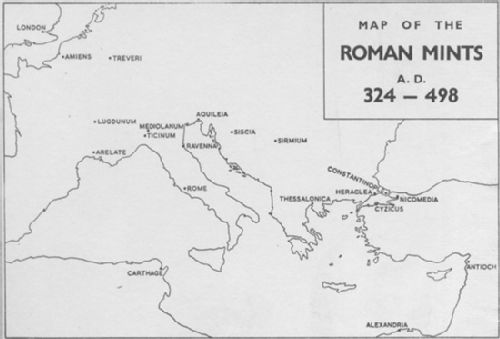
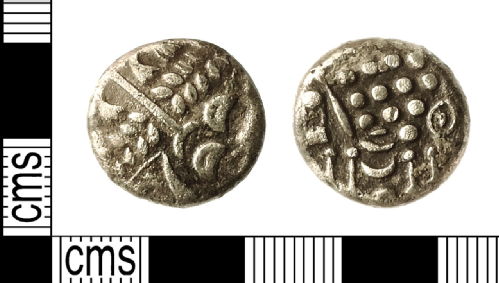






 This month’s coin was chosen by Suzanne Frey-Kupper, Associate Professor of Numismatics and Classical Archaeology at the Department of Classics and Ancient History at the University of Warwick. She works on Greek, Punic, and Roman coinage from the Western Mediterranean and the North-Western provinces. She has published the coin finds from many major archaeological sites, in Italy and Sicily, Malta, Cossyra, Carthage and North of the Alps. With N.K. Rutter and J. Morcom she is currently preparing the volume Sicily and the Adjacent Islands of
This month’s coin was chosen by Suzanne Frey-Kupper, Associate Professor of Numismatics and Classical Archaeology at the Department of Classics and Ancient History at the University of Warwick. She works on Greek, Punic, and Roman coinage from the Western Mediterranean and the North-Western provinces. She has published the coin finds from many major archaeological sites, in Italy and Sicily, Malta, Cossyra, Carthage and North of the Alps. With N.K. Rutter and J. Morcom she is currently preparing the volume Sicily and the Adjacent Islands of 
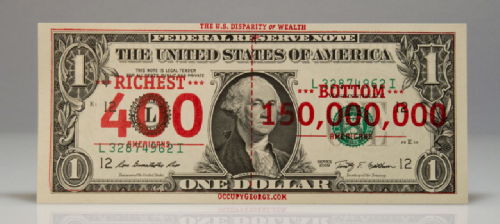
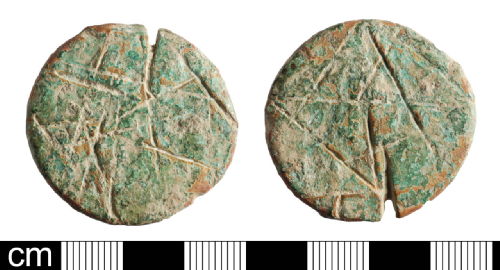

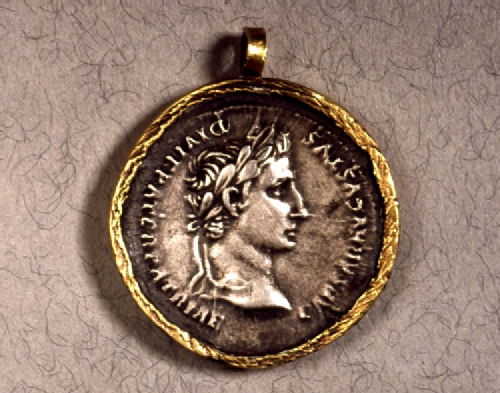
 This month's coin was chosen by Eve Bayram. Eve graduated from Warwick in 2014 with a degree in Classical Civilisation. While at Warwick Eve focused on the study of Latin literature, and her disseration was entitled 'Self-presentation in the Latin epistolary genre: Cicero, Seneca, Petrarch.' She is currently interning in the dictionaries department at Oxford University Press.
This month's coin was chosen by Eve Bayram. Eve graduated from Warwick in 2014 with a degree in Classical Civilisation. While at Warwick Eve focused on the study of Latin literature, and her disseration was entitled 'Self-presentation in the Latin epistolary genre: Cicero, Seneca, Petrarch.' She is currently interning in the dictionaries department at Oxford University Press.




 This month’s coin was chosen by
This month’s coin was chosen by 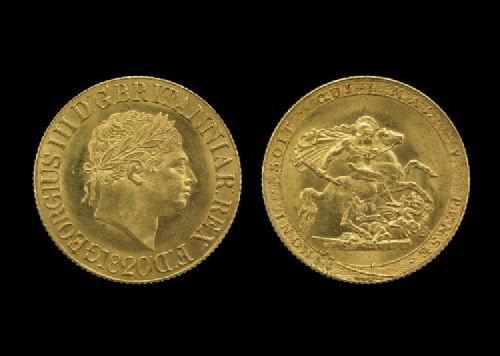

 Loading…
Loading…

